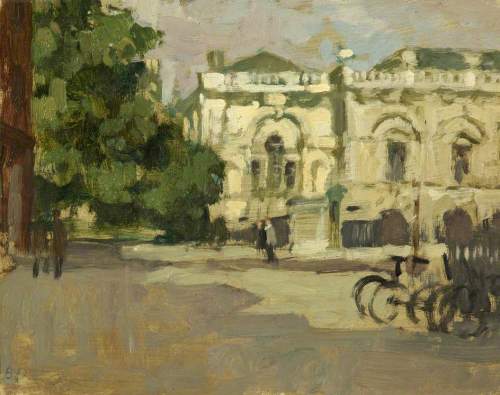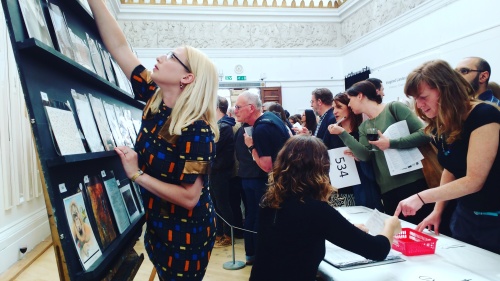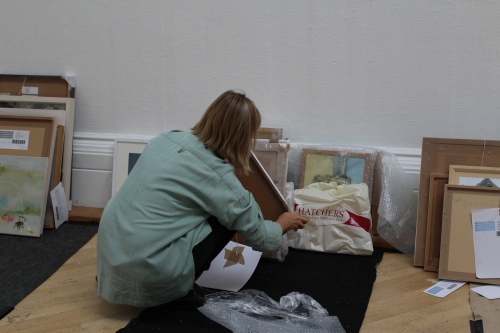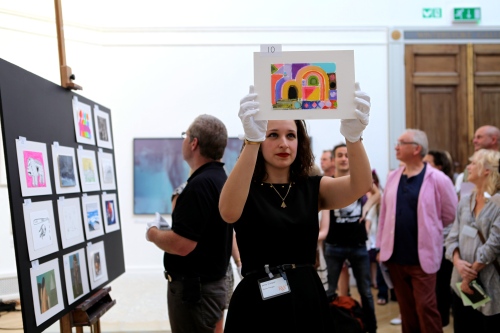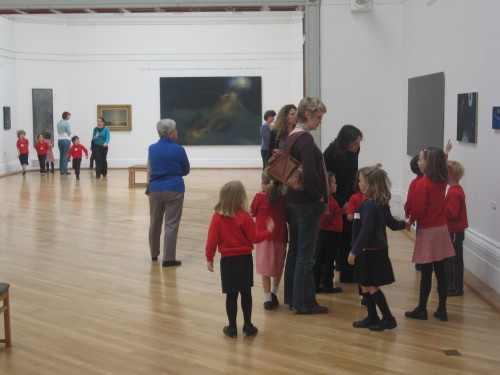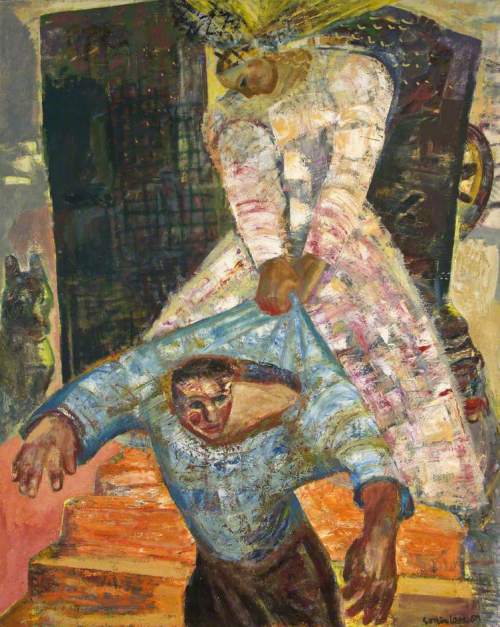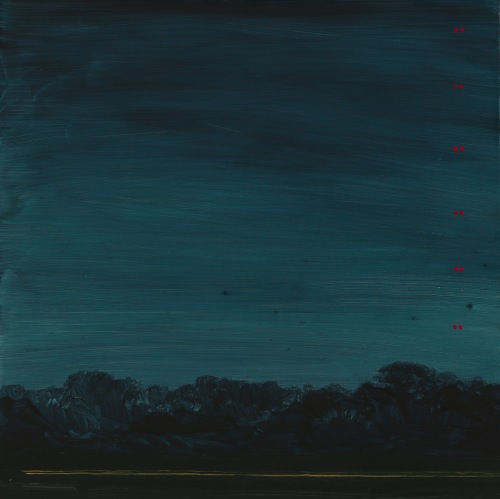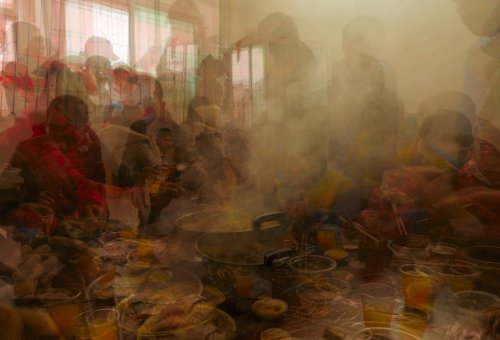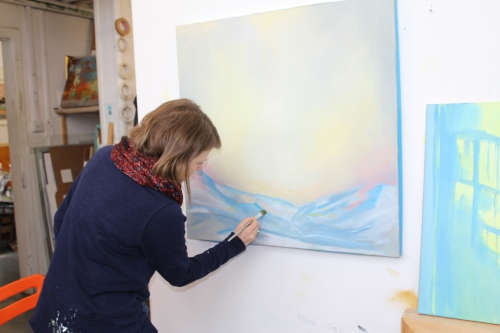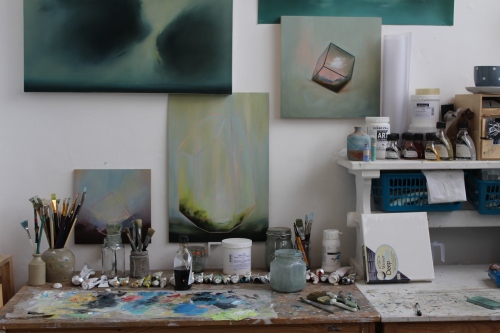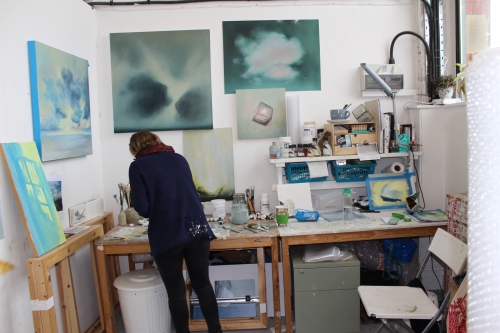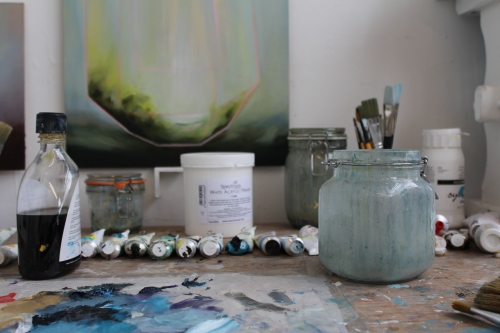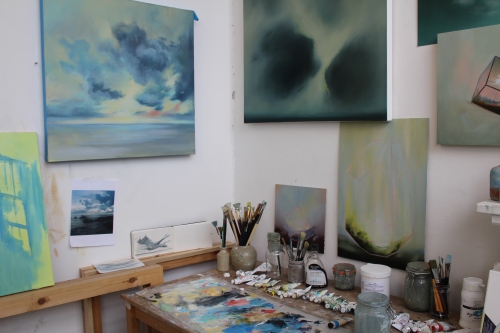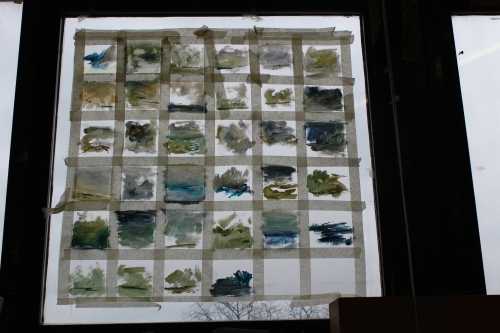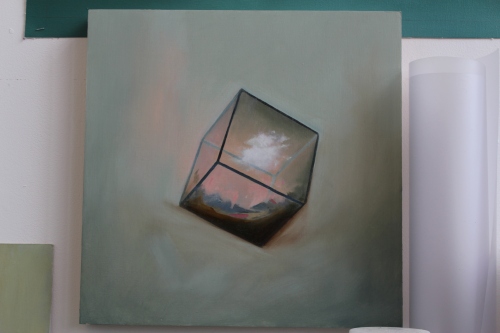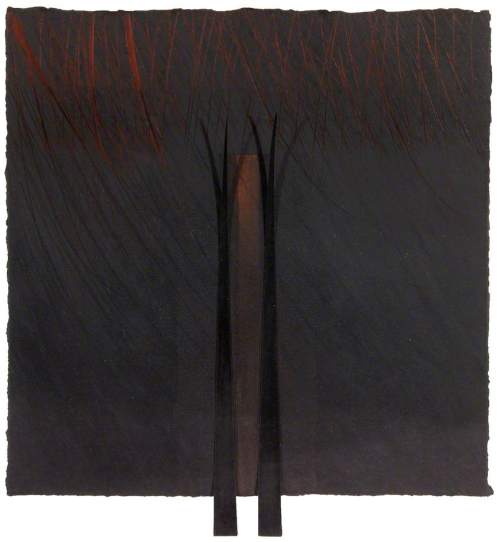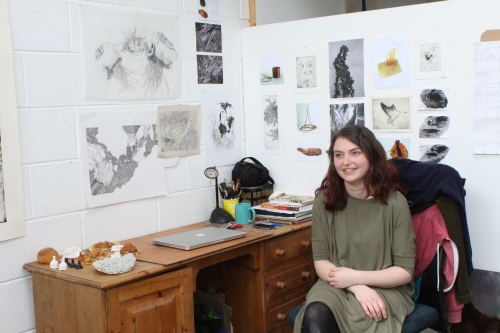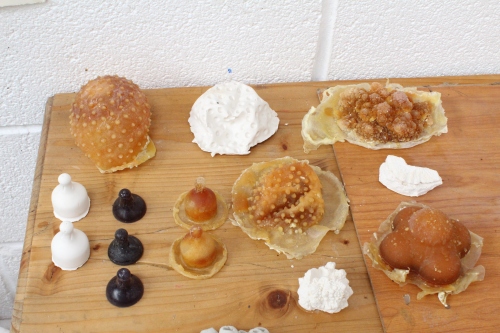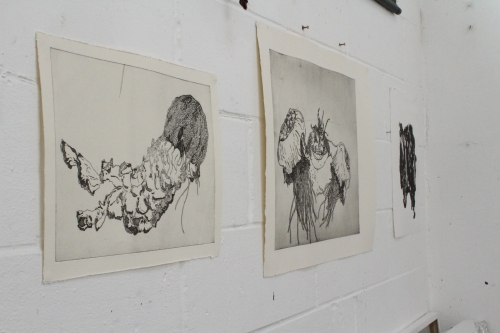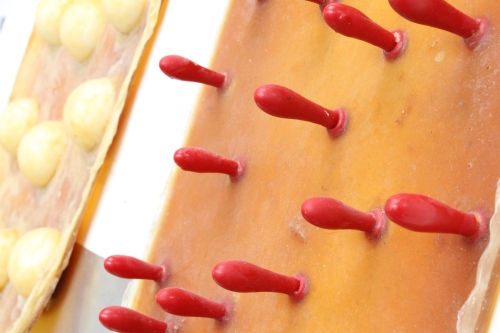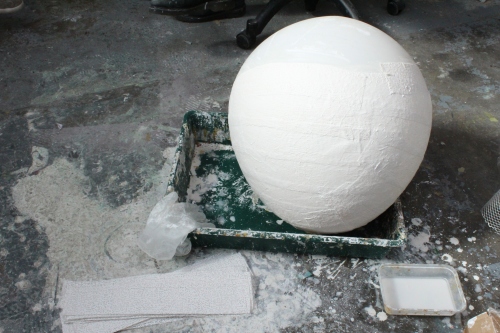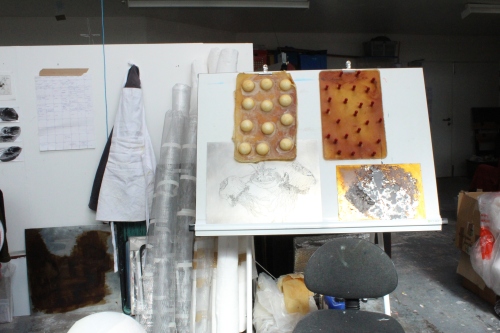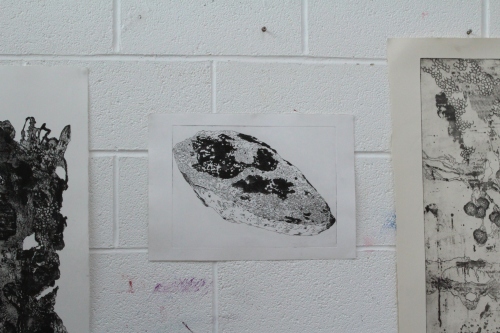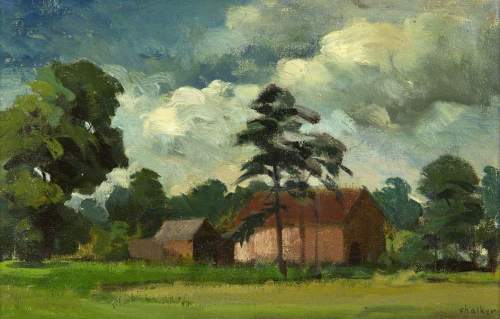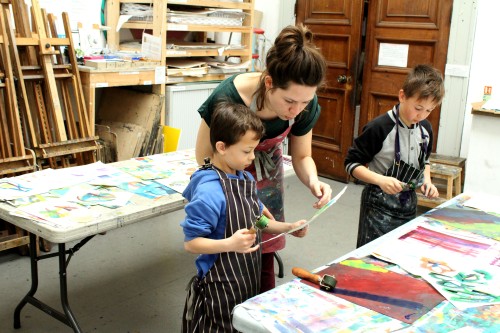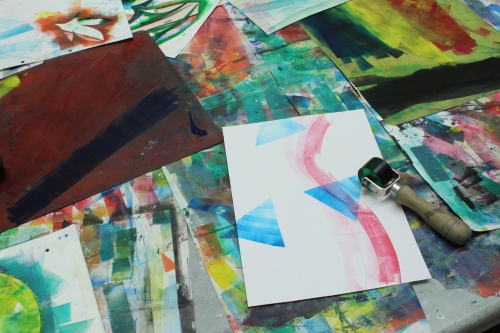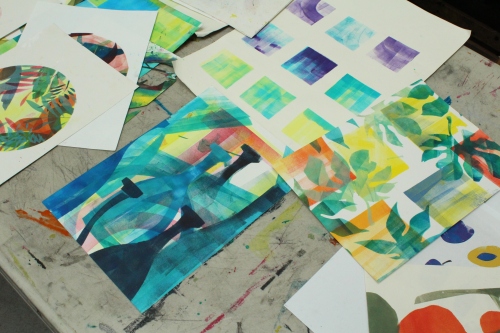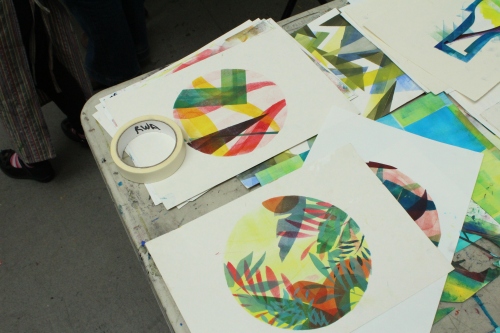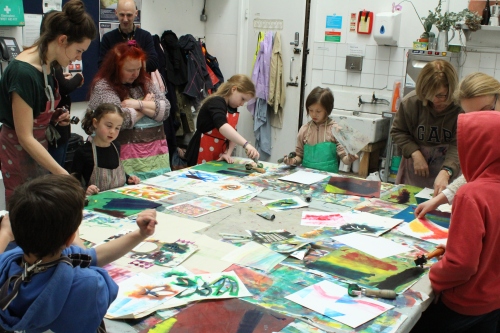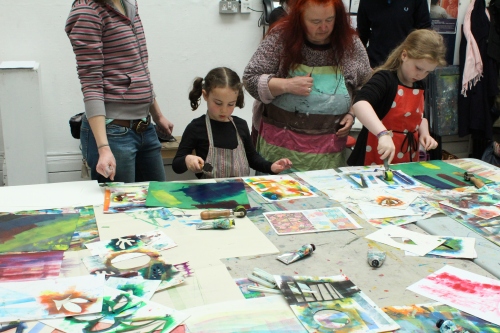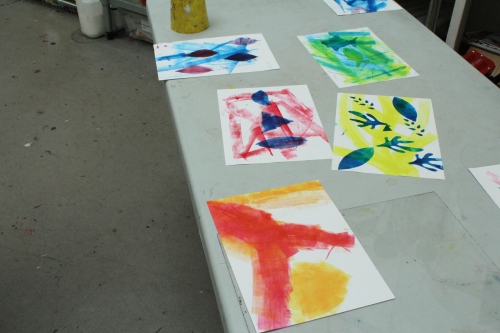Another round of applications for our Artist Network scheme has been and gone, and this time we’re delighted to welcome eight new members!
Find out a little more about them and their work below.
Amanda Chambers
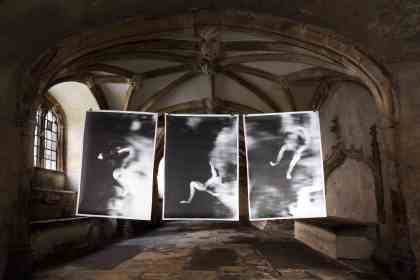
Burning Lake, installation
‘Amanda’s work is primarily concerned with our proximity to the past and the exploration of its residual traces found in archaeology, the built and natural environment and archival and collection sources. It seeks to establish a physical connection: in doing so, exploring how history may become inherited, personalised and present.’
Ashar

Path to Axe Head, oil, 20 x 20 inches
‘Abstract art can reach into my soul and move and absorb me like no other art form. However it is the British landscape that inspires me and has always been my muse. I do not want to depict it I want to express it; by conveying the feelings I have for it.’
Dallas Collins

Planed All Over, etched aluminium box with rivets
‘Art & science have played an important part within my work whether it’s science fiction or science fact. The idea that artwork is limitless has had a profound interest for me from a very early age. My artwork tries to give the viewer a sense of wonderment in showing the things that sometimes reside behind the mirror and not always in front. I’ve lived with engineering and technology all my life and transferring these skills into art has played an important part in where I stand today as an artist.’
Stacey Guthrie

Woman with a Soiled Non-Stick Iron
‘The point I make via my art is personal and political and it remains acutely relevant in the 21st century; that woman is still seen as secondary to the needs of others. Much of my work represents the critical point where a woman starts to realise the impact of a lifetime of nurturing others over her own dreams and desires. The other aspect of my work is the subversion of the male gaze. As a middle-ages woman I find myself able to challenge the ownership society has over a woman’s image. I employ carnivalesque, surreal imagery to question how we view and value women.’
Catherine Knight

Hrisey 12.25, oil on board
‘My current work is based on my recent residency on the island of Hrísey, Iceland in December 2013. I am working on a body of paintings focused on the small amount of daylight present during the winter in Northern Iceland and the constant shifts in light. I am fascinated by the vast and remote landscape in contrast to the small communities of people who live in such isolation.’
Gail Mason
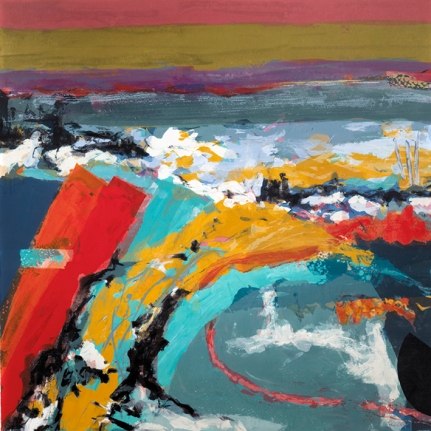
Breach, silkscreen monotype
‘My work is concerned with the experience of being in … or sense of … a place or journey … real or imagined. The monotypes do not seek to be physically accurate or describe anywhere particular, but are places that I would like to walk through and explore.These are an outward expression of inner mark making, the footprints of past and future encounters.’
Ruth Piper

Ghost Bride
‘Central to my work is the notion of transition and transformation that link to a
strong sense of place both physical and psychological. The process of painting is experienced here as a fictional layering of the past and present that can look back at the viewer with a glimpse of something hidden, not yet known or experienced. These paintings are located in the transitional mythological space between knowing and the unconscious, where dreams and reality merge.’
Penny Simons

Silk Book with Stitch and Spider
‘My work is fundamentally rooted in an exploration of materials in as direct a way as
possible. Unexpected pairings can produce visually and conceptually interesting results. I found watching the process of making silk (by the silkworm) unexpectedly triggered links with other repetitive actions which produce a gradual emergence of something new. Making paper is another fixation: the transformation of threads which can fold, hold,
support, and sometimes smother. At the moment Iʼm working on using it as a collage element to investigate links between internal systems, both human and landscape.’

